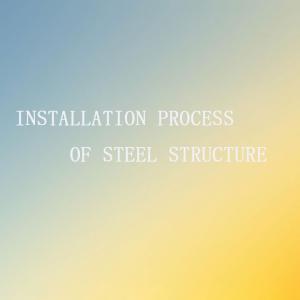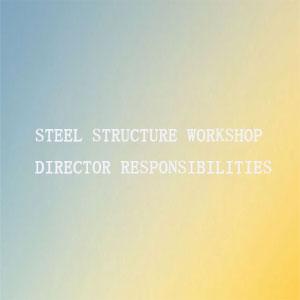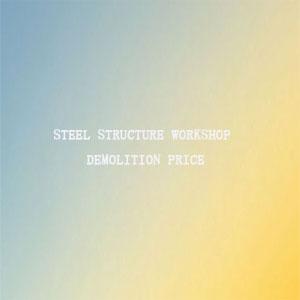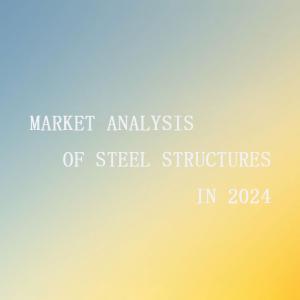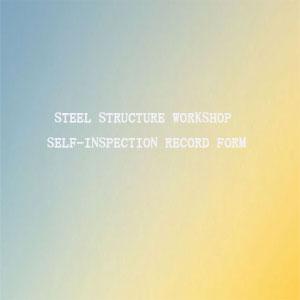Steel structure production process technology
Steel structure production process technologySteel structures play an important role in the field of construction, and their production process is rigorous and complex, covering multiple key steps to ensure the quality and performance of the final product.
1. Preparation of raw materials
Steel structure manufacturers first need to purchase and inspect raw materials. Steel is the main raw material. According to the design requirements, choose the appropriate steel type and specification, such as Q235, Q345, etc. The purchased steel must have quality certification documents.
After entering the factory, steel must undergo strict inspection. Including visual inspection to check for defects such as cracks, scars, folds, etc. on the surface of the steel; Simultaneously conduct dimensional measurements to ensure that the length, width, thickness, and other dimensions of the steel meet the design tolerance range. The mechanical properties of steel, such as tensile strength, yield strength, impact toughness, etc., will also be tested through sampling inspection. Unqualified raw materials will not be used.
2. Layout and Marking
Layout is a crucial step in the production of steel structures. Technicians use professional layout software or manual layout methods based on the steel structure design drawings to accurately draw the shapes and dimensions of each component of the steel structure on the template. This process needs to consider factors such as machining allowance and welding shrinkage to ensure the accuracy of subsequent processing.
Marking the cutting and processing positions of each component on the steel based on the layout. During the marking process, it is necessary to plan the use of steel reasonably, minimize waste generation, and improve material utilization efficiency. At the same time, the marking of the material should be clear and accurate, facilitating subsequent cutting operations.
3 Cutting and Processing
Cutting is the process of dividing steel into required components according to the marking of the material number. The commonly used cutting methods include flame cutting, plasma cutting, and laser cutting.
Flame cutting has a lower cost and is suitable for thicker steel, but the cutting accuracy is relatively low and the quality of the cutting surface may have some roughness. Plasma cutting has fast speed and high precision, and can cut various metal materials, especially suitable for special steels such as stainless steel. Laser cutting has the advantages of high precision, smooth cutting surface, and small heat affected zone, but the equipment cost is relatively high. During the cutting process, it is necessary to strictly control cutting parameters such as cutting speed, flame temperature, plasma current, etc. to ensure cutting quality and ensure that the size and shape of the components meet the design requirements.
4 Correction and Forming
The cut steel components may have some deformation and need to be corrected. The correction methods include mechanical correction and flame correction. Mechanical correction utilizes specialized correction equipment such as presses and correction machines to apply external force to components, restoring them to their correct shape. Flame correction is achieved by locally heating the components and utilizing the principle of thermal expansion and contraction of steel to eliminate deformation.
For some components that require special shapes, such as curved beams, bends, etc., forming processing is required. Forming processing can be carried out using cold bending or hot bending methods, and the appropriate forming process can be selected based on factors such as the material, thickness, and bending radius of the component.
5 Welding and assembly
Welding is a crucial step in the production of steel structures. Firstly, suitable welding processes and materials should be selected based on the material and design requirements of the components, such as electrode arc welding, gas shielded welding, etc. Welding workers must possess corresponding qualification certificates. During the welding process, welding parameters such as current, voltage, welding speed, etc. must be strictly controlled to ensure the quality of the weld seam.
After welding is completed, the weld seam should undergo visual inspection and non-destructive testing. Visual inspection is conducted to check for defects such as porosity, slag inclusion, and cracks on the surface of the weld seam. Non destructive testing is performed using methods such as ultrasonic testing and radiographic testing to inspect the internal quality of the weld seam.
Assembly is the process of combining various processed components according to design requirements. During the assembly process, appropriate fixtures and jigs should be used to ensure the accurate relative position of the components and prepare for subsequent connections.
6 Surface Treatment and Coating
The surface treatment of steel structures is mainly aimed at removing impurities such as oil stains and rust on the surface, and improving the adhesion of coatings. Common surface treatment methods include sandblasting and shot blasting for rust removal.
Coating refers to applying anti-corrosion paint, fireproof paint, and other coatings on the surface of the steel structure after surface treatment. Painting should be carried out according to the specified number of layers and thickness to ensure the quality and protective effect of the coating.
7 Quality Inspection and Packaging
Quality inspection is carried out at every stage of steel structure production, but a comprehensive finished product inspection is ultimately required. The inspection content includes the dimensional accuracy of the components, the quality of the welds, the quality of the coating, the strength and stability of the overall structure, etc.
Qualified steel structural components must be packaged to protect them from damage during transportation. For large components, appropriate fixing and protective measures should be taken to ensure safe transportation to the construction site.
In short, every link in the steel structure production process is closely connected, and strict control of each link is necessary to produce high-quality steel structure products.
